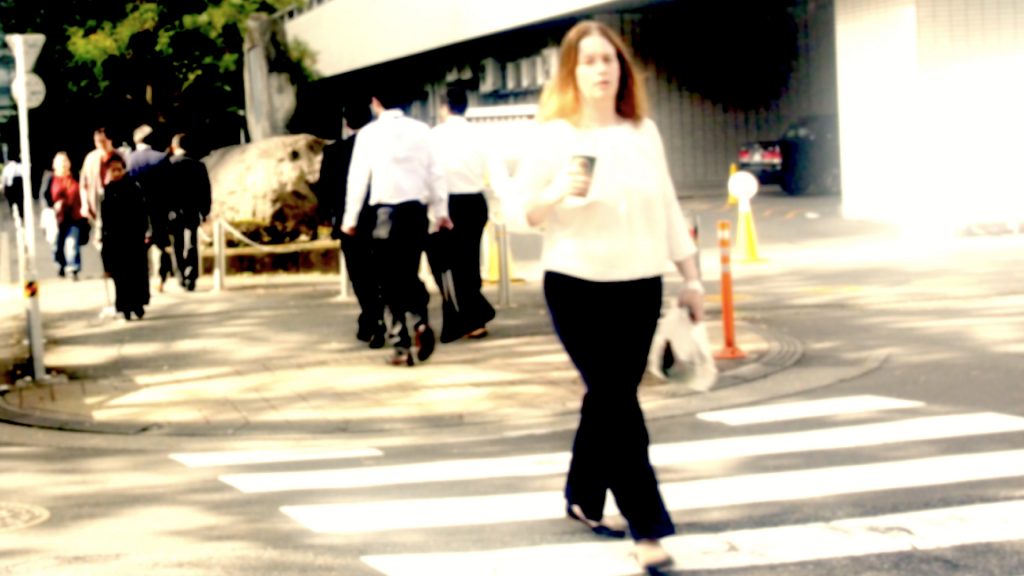
SNA (Tokyo) — Last Friday, the Covid-19 global pandemic passed the horrifying milestone of one million infections and 50,000 fatalities worldwide. There have, as of this writing, been 4,592 confirmed cases and 106 deaths in Japan. Graphs of new cases and deaths trace the left half of steep parabolas as the world’s nations fail to flatten the curve. The global catastrophe and its grim toll traps workers between the closing jaws of infection risk and dire economic straits. As US commentator Krystal Ball noted, “the working class has been shoved into the front lines of this crisis.”
Around Japan, workers still commute each day on packed trains and file into crowded meeting rooms. Some are told to stay home, with or without pay. Each day, Tozen Union (where I work) gets dozens of inquiries from workers facing stark options–infection or income. They are damned if they show up to work and damned if they don’t.
We hear “I want to work but can’t” from those whose bosses tell them to stay home. Many of them fear the income loss more than the infection. “I want to stay home, but have to work” comes from those who prioritize public health, but are forced to come in by employers who have other priorities. These two positions mirror the opposing trends we see in society as a whole; those who are overly cavalier over this “flu-thing” and those with fevered nightmares of the apocalypse.
What happens to income when workers are forced to stay home? Article 26 of the Labor Standards Act stipulates 60% of “average pay” (heikin chingin) as a furlough allowance (kyugyo teate). I place scare quotes there because heikin chingin is defined in Article 12 such that it can be as low as 60% of your real pay before taking 60% of that.
More precisely, the boss divides the sum of the last three months’ gross pay by the total number of calendar days, rather than by the total number of workdays. This larger denominator means your so-called average day rate falls below your real daily wage. Your furlough allowance could end up just 36% of your real pay; that is, 60% (Article 26) of 60% (Article 12).
Let’s say you earn ¥240,000 for 20 days work in each of January, February, and March 2020. Divide 720,000 yen (240,000 x 3) by the 91 days of those three months. This gives you a heikin chingin of just 7,912 yen, even though your real pay is 12,000 yen (240,000 / 20). Your “average pay” works out to only 66% of your real daily wage.
To convey the legal jargon accurately, I sometimes translate heikin chingin as calendar day pay rather than average wage. This rendering captures the important qualification that you must divide by all the calendar days rather than your workdays.
In a Q&A on coronavirus, the Labour Lawyers Association of Japan urges workers to demand full pay, since the crisis is no fault of workers. Corporations are better positioned to absorb financial hits than workers with families. Labor unions should demand generous hazard pay if asked to continue to work, since elder or immune-compromised employees are risking their lives.
In fact, many employers are paying a furlough allowance equivalent to 60% of real pay after telling workers to stay safe at home. Other bosses refuse to pay a yen. Workers must unionize and demand 100% of real pay.
If you get Covid-19 at work, you may qualify for industrial accident insurance (rosai hoken). If you are enrolled in the health and pension (shakai hoken) scheme, you can get an accident and illness allowance (shobyo teate) beginning your fourth day out.
On April 3, the government reportedly decided to pay 300,000 yen to households able to demonstrate low income (possibly below 1 million yen a year) or a large income decline due to Covid-19. Eligibility requirements will be released soon, including whether foreign households qualify. Chief Cabinet Secretary Yoshihide Suga noted that foreigners received cash payments in the past and promised to look at the precedents before deciding.
However, House of Councillors Kimi Onoda tweeted, “regardless of taxpayer status, Japanese citizenship must be a condition” for receiving such public largesse. “We could consider reciprocity if other countries treat Japanese citizens in the same way, but we don’t take citizenship seriously enough.” The US-born Diet member’s comment provoked outrage and a change.org petition calling for her resignation.
Doesn’t a foreigner get sick with the same diseases? If you prick us with a pin, don’t we bleed? Do we not infect and get infected just as Japanese citizens do? Foreigners who are left to rot when their neighbors get this cash infusion will ride crowded trains to go to work to pay the bills that keep coming despite the coronavirus. They already work with little job security and face arbitrary decisions on visa renewal by indifferent immigration bureaucrats. When foreigners then spread the coronavirus, be ready for rightists to blame such outsiders for worsening the pandemic.
Also, Osaka Governor Hirofumi Yoshimura and novelist Naoki Hyakuta have called for refusing the payment to welfare recipients. Yoshimura reasons that their income has not declined “by even one yen,” so they don’t need it. In fact, the government’s plan will reportedly include such households.
Workers and unions must fight at the front, demanding monthly subsidies to get us all through this crisis. Without monthly government support to every man, woman, and child in Japan, workers will keep working, risking a prolongation of the pandemic. That means more dead bodies.
Most of all, we must stand together. This coronavirus divides and isolates workers just when life and death challenges require unity and collective action. Workers must somehow overcome division and band together in the face of this global pestilence.
This article was written by Louis Carlet, with contributions by Hifumi Okunuki, and originally published by the Shingetsu News Agency (SNA).

Comments are closed